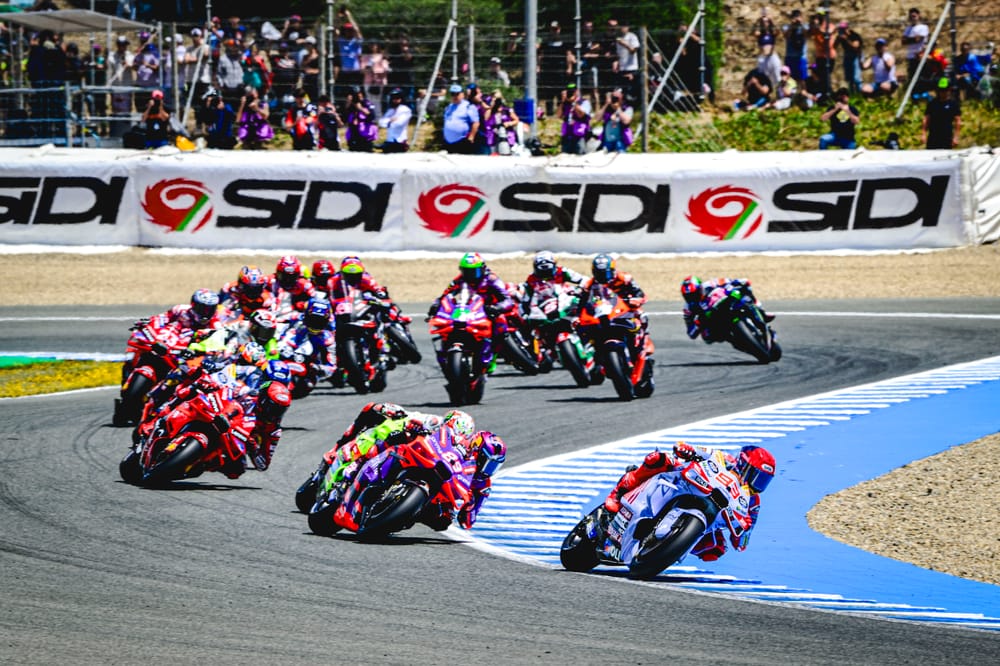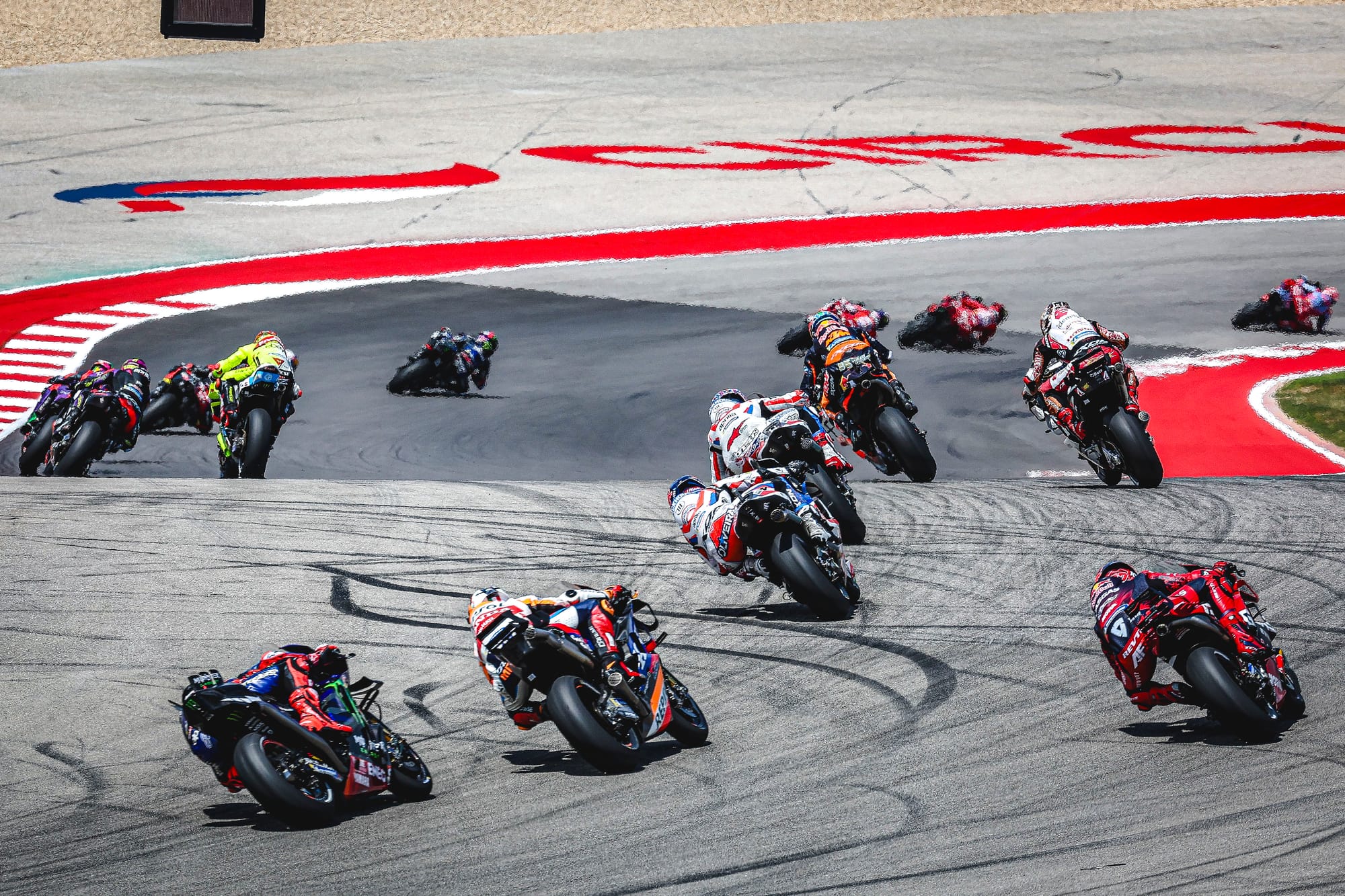MotoGP has announced its new regulations for 2027, featuring a headline announcement of a reduction in engine capacity from 1000cc to 850cc as the series tries to slow down bikes and make traditional circuits safer.
Though the rules come largely as expected, there are a few more surprise announcements that will come as welcome relief to many.
The 150cc capacity drop was reported months ago and is therefore no surprise, but while the cylinder bore will correspondingly decrease from 81mm to 75mm, there will be no further alteration of the rules - meaning that MotoGP bikes will all remain as four-cylinder machines, removing any chance of a return to the true prototype engines of the series' initial era.
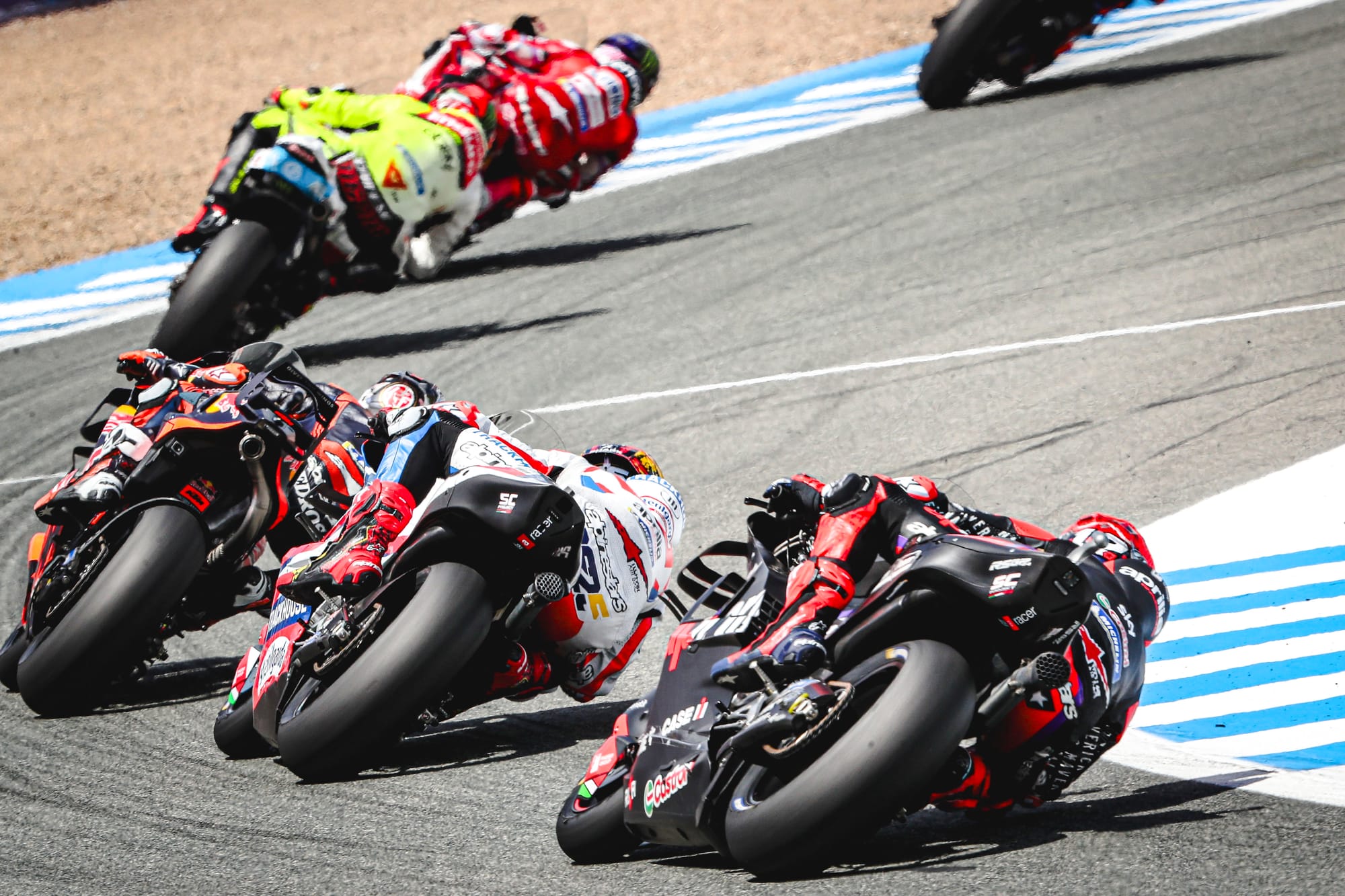
The change should mean that the new era of machines are slower, something that has become necessary in order to reduce the risk of incidents at some of MotoGP’s more traditional circuits.
That has however been tried before with disastrous consequences, thanks to the high cornering speed and susceptibility of the 800cc era bikes to highsiding, so it’s an area where attention needs to be paid as the championship goes forward.
That might be aided by changes to the gearbox regulations that will reduce the number of available ratios from 24 to 16, which should help to reduce the desirability of a high-revving, high corner speed design.
The second major change comes in terms of ride-height devices, with an unexpected total ban being imposed - even on those used for the start of races.
Such devices were initially introduced to help control wheelies off the line but eventually evolved into devices that are activated by the rider as they exit every corner.
Previously used at the front and rear until the front devices were banned, they’ve been cited as a key contributor to the drop in quality of racing due to the way in which the devices essentially reduce the reliance on rider skill on corner exit - meaning that every exit is now basically flawless, allowing less opportunity for riders to make a difference.
It was initially believed that the devices used for race starts would be kept at the insistence of the riders themselves, who see them as valuable safety assets off the line.
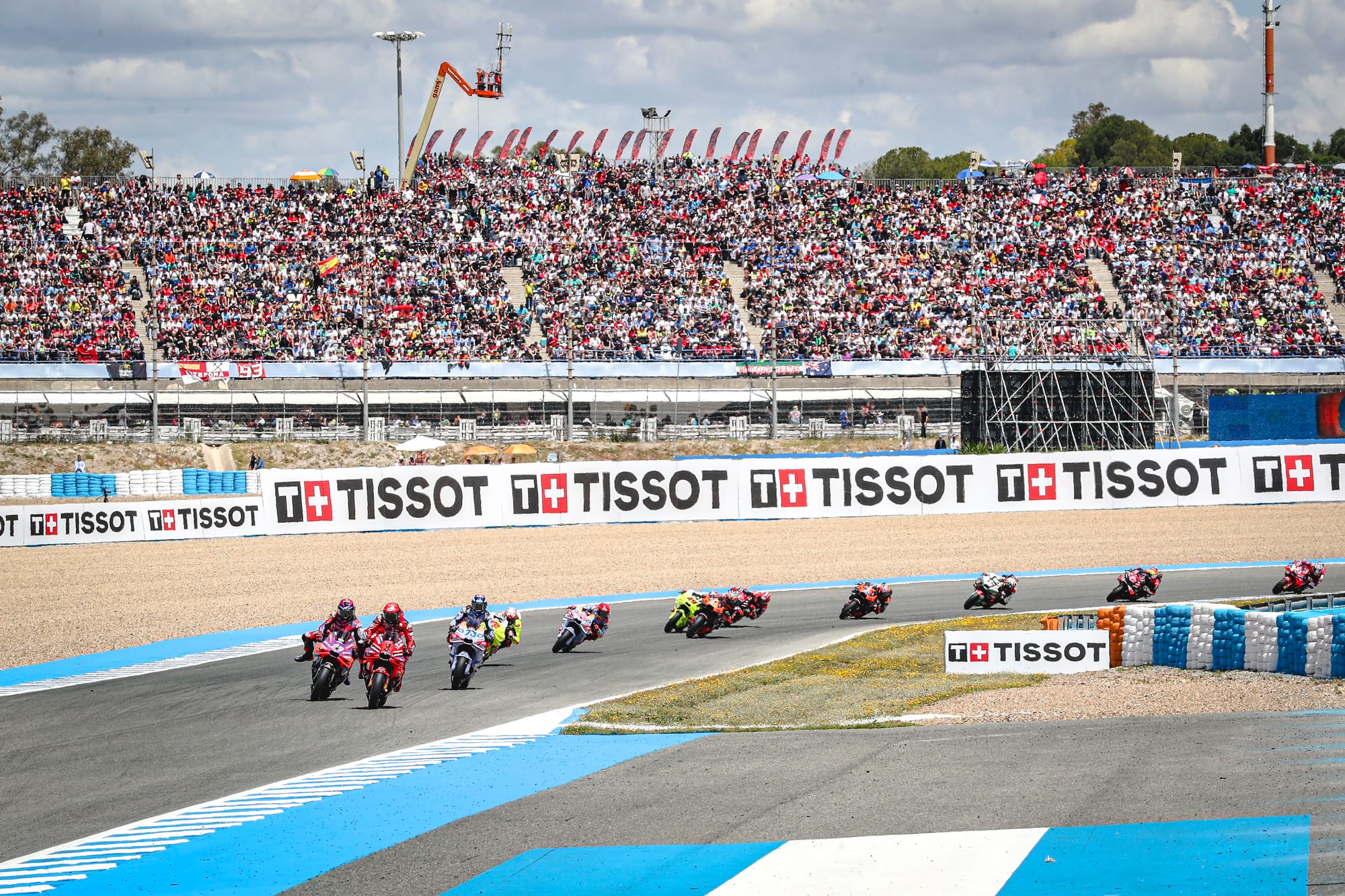
Finally, there will be significant changes to the way in which manufacturers can incorporate aerodynamic shapes into their bikes.
The ‘maximum permitted width of the high portion of the front fairing aero body will be reduced from 600mm to 550mm, the maximum width at the rear will reduce from 1250mm to 1150mm, and the foremost nose of the bike will move back 50mm.
Perhaps even more significantly, though, the rear of the bike will now become part of the machine’s homologated aero package, meaning that it must be frozen in place before the start of the season and can only be updated once.
That comes as a major change from the current rules, where aero homologation applies only to the front and sides of the bikes, meaning that manufacturers have had free reign to play with the rear of the machine in recent months.
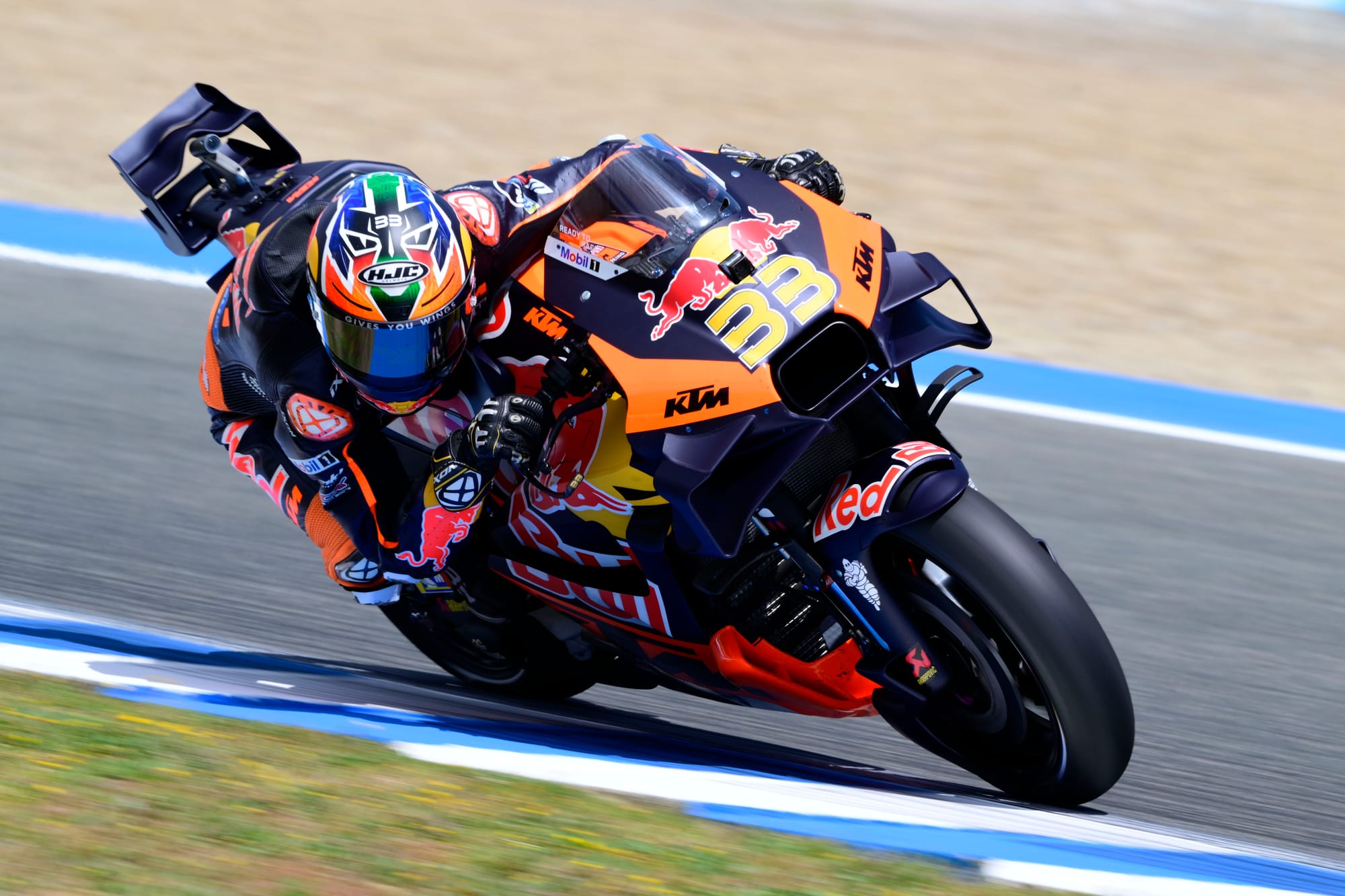
More minor changes will also be made to the rules in line with trends already seen in the past, with the number of engines allowed over the course of a season reduced by one to six, fuel capacity reduced to 20 litres, and overall weight reduced by 4kg to 153kg to match the new engines.
There will also be slight changes to the concession system in order to balance the introduction of new bikes, with all factories who have already raced in 2026 moved to band B of the new rules, a space currently occupied by none of the five factories.
That would demote Ducati from band A and move KTM and Aprilia from band C and Honda and Yamaha from band D, which means that factories will only be allowed to test with their designated test riders not their race team, that mid-season engine development will be banned, and that each manufacturer will only be allowed three wildcards.
However, factories that have not raced in 2026 - most likely BMW - will start in band D. They would be permitted six wildcards, unlimited testing with their race team, and would be allowed to bring both an unrestricted number of engine upgrades and an additional aerodynamics upgrade.

